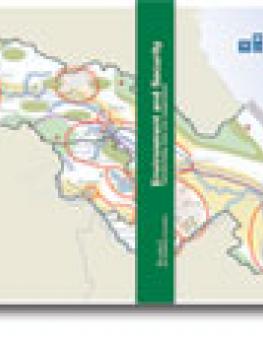
Environment and Security: Transforming Risks Into Cooperation - The Case of the Southern Caucasus
The Southern Caucasus—composed of Armenia, Azerbaijan, and Georgia—has long been a focal point for change, a bridge between Asia and Europe. Today, social, political and economic transformations are altering century-old relationships between countries and communities, affecting and being affected by the natural environment. In the worst case, environmental stress and change could undermine security in the region. In the best, sound environmental management and technical cooperation can be a means for strengthening security in the Southern Caucasus, while promoting sustainable development. What priority actions can be taken to harness the environment for peace?
The United Nations Development Programme, United Nations Environment Programme and the Organization for Security and Co-operation in Europe have joined forces in the Environment and Security (ENVSEC) Initiative to offer countries their combined pool of expertise and resources in order to identify and mobilize resources towards those priorities. At the invitation of the governments of Armenia, Azerbaijan and Georgia, ENVSEC was extended to the countries of the Southern Caucasus in 2004.
This report—available in both Russian and English—presents through maps and graphics the linkages between environmental stress, potential social tension and areas of particular vulnerability in the Southern Caucasus, as identified by stakeholders from the countries:
-
Environmental degradation and access to natural resources in areas of conflict;
-
Management of cross-border environmental concerns: cross-border water resources, natural hazards, and industrial and military legacies; and
-
Population growth and rapid development in capital and other major cities.
It sets out the basis for addressing these linkages through:
-
In depth vulnerability assessment, early warning and monitoring of "at risk" areas;
-
Policy development and implementation; and
-
Institutional development, capacity building and advocacy.
Additional downloads
You might also be interested in
Strategic Environmental Assessment for the Mining Sector
Strategic environmental assessments (SEA) are an essential tool for policy-makers working to develop a sector-wide vision for responsible mining.
Blackouts and Backsliding: Energy subsidies in South Africa 2023
Blackouts and Backsliding presents the latest energy subsidy data for South Africa.
Sustainable Asset Valuation of Parques del Río Norte in Medellín, Colombia
This economic valuation demonstrates the benefits of expanding urban green space in the city of Medellín, Colombia.
Progressing National SDGs Implementation
An independent assessment of the voluntary national review reports submitted to the United Nations High-level Political Forum on Sustainable Development in 2023.